You may have read my previous post about a visit to a brand new Berckemeyer BM 50 yacht currently in the state of starting interior fitting. I drove all through Germany to Cologne, which is a 4.5 hours drive from my home town of Luebeck, literally, to see the Berckemeyer as these boats are by far my most beloved yachts, worth an 8 hours drive for sure. But, in the course of visiting the scene, I realized that the very place – Brune Yachtbau – was so fascinating that this yard is indeed worth an own article.
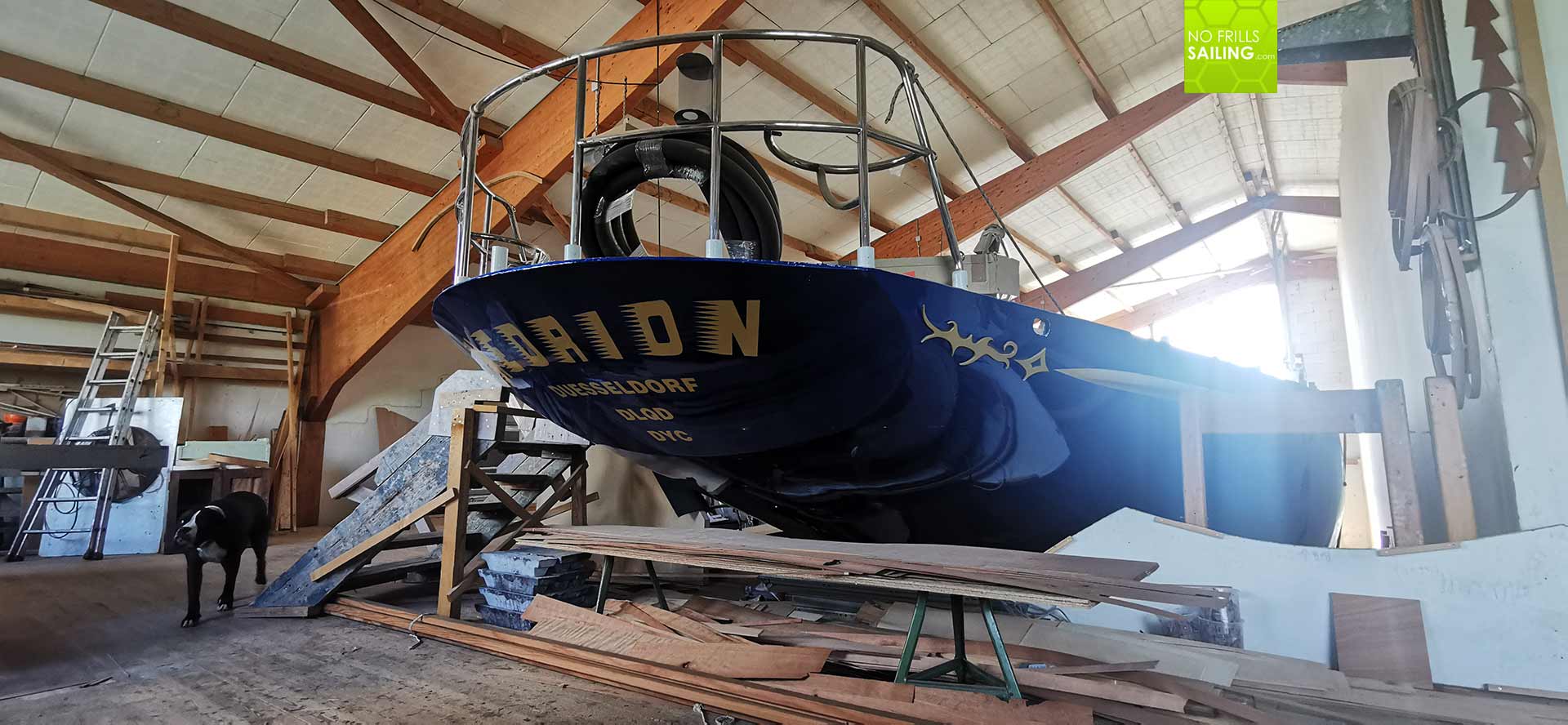
So, meet me in Erftstadt, some 20 minutes west of the big City at River Rhine, to have the grand tour through a yard of which there aren´t too many anymore. And that makes this place so special. Upon entering the main hall, I was greeted by a huge dog – the cute and frisky Luna – and Mr. Brune´s secretary, who welcomed me. I went upstairs into the Boss´ office, passing the huge impressive stern of a big 25 meter yacht. The smell of fresh timber, a scent of Teak, was a nice contrast to the biting GRP-smell of the yards I usually visit. I took a seat while waiting, after a few minutes I heard heavy steps on the stairs. With a deep Colognian idiom, Willi Brune said Hello, his handshake firm and strong: A real craftsman.
100 Years of Craftsmanship
Sitting in his office, Willi began to briefly tell the story of his company. A rich history: Four generations ago Brune Carpentry was founded, some 100 years ago. His grand-grandfather specialized in furniture construction and laid foundation to the family business. Willi himself is a skilled and trained carpenter. As a young man he gained the master craftsman´s certificate and worked in his fathers workshop. He soon began to develop his interest in sailing and sailboats. His passion became a crave and so he specialized in boatbuilding, creating a second branch of the carpentry business.

Cologne, by a quick look onto the map, may not seem to be an ideal choice for a yard. But at second glance it has its advantages: River Rhine connects directly to the big port or Rotterdam, therefore into the North Sea and the world. The river is deep enough for big boats. Also, canals and waterways connect Cologne and Duesseldorf with most of the big inshore- waterways and other countries. Like a spider in the net, right in the middle. An ideal place. Far away from the shore, much cheaper to maintain. After he had finished his first yachts in refit, he advanced to gain a master craftsman´s certificate in boatbuilding. Right now on his 8.000 square meter property he houses two big workshops/halls, owns his tools, milling machines and all sorts of special machinery and has quite an impressive staff, of which he regularly trains and qualifies young, enthusiastic people to become joiners, carpenters and boatbuilders.
Amazing: High Seas in the Middle of Germany
We start the tour at the BM 50, as this was indeed the one boat I came to see. She is really a big lady, 50 feet indeed is an impressive size for a yacht. But next to the big blue classy sailship she got really dwarfed. Willi, while I was roaming the Berckemeyer to take my pictures, went on to tell me more about his company: Brune Yachtbau is specialized on refitting mainly the wooden parts of the yachts. As joiners and carpenters, that’s their main focus. But they also do structural works like hull repair and refit of all material, Aluminum, steel, GRP and of course timber.
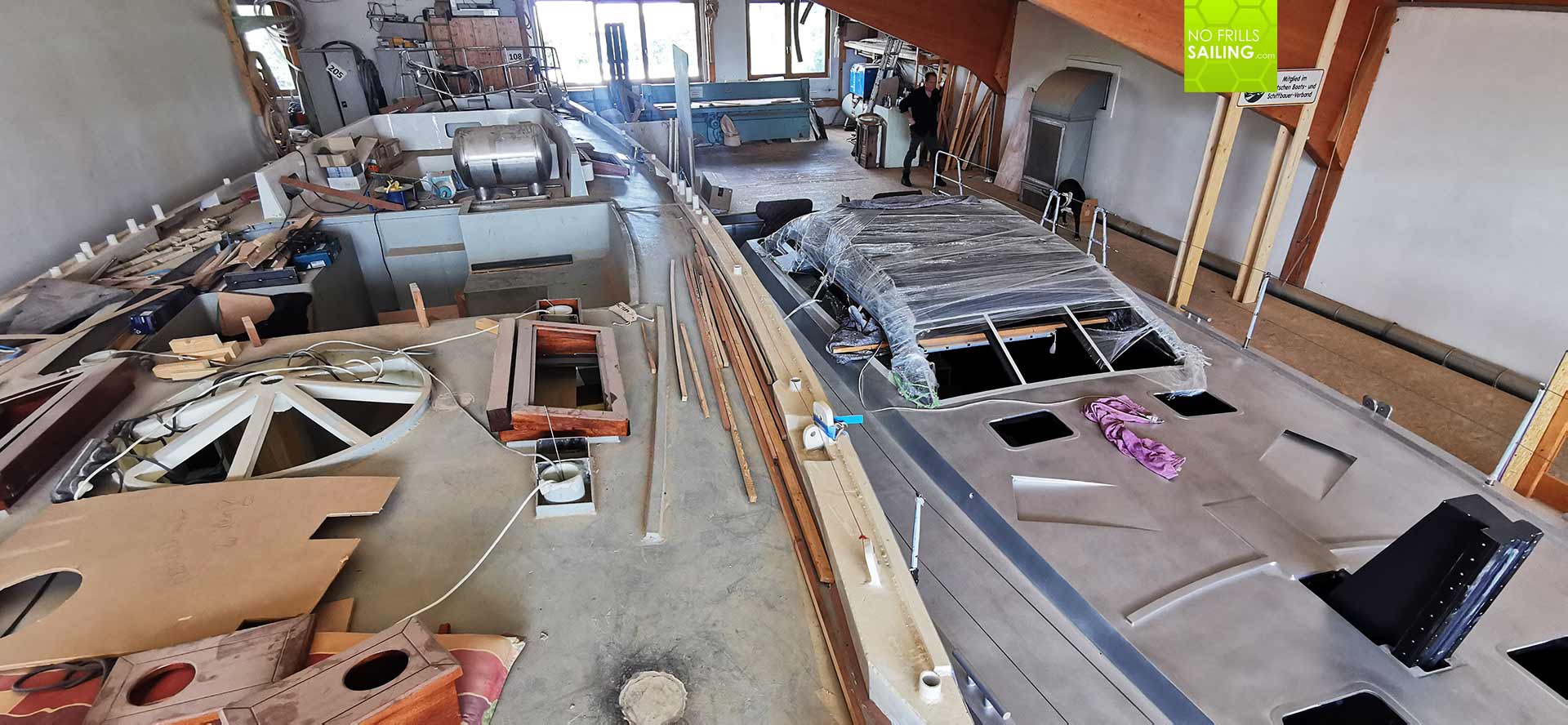
His clients? Individuals who by word-of-mouth know about the good work that is done here, mostly special yachts, classics and boats with a high value. At least, so he tells me and laughs, the value is rated so high by their owners. Willi rarely receives a job to refit a production boat, an ordinary cruiser of the big five brands. It´s mostly special ships, ships with a history, with roots and character. This is his passion, his love.
Serious Boatbuilding
To deliver and being able to live up to the high expectations of his clients, Willi stepped up in equipping his enterprise. The machinery may not seem like brand new, but he has everything at hand to produce, re-build or refurbish nearly all parts of a boat: Be it wooden or metal. He opens a big closet, pulls out big baskets full of yellowed big sheets of paper: Plans, many of them handwritten and painted in ink, most of them with handwritten notes on them. The secrets of generations of boatbuilders, a treasure indeed!
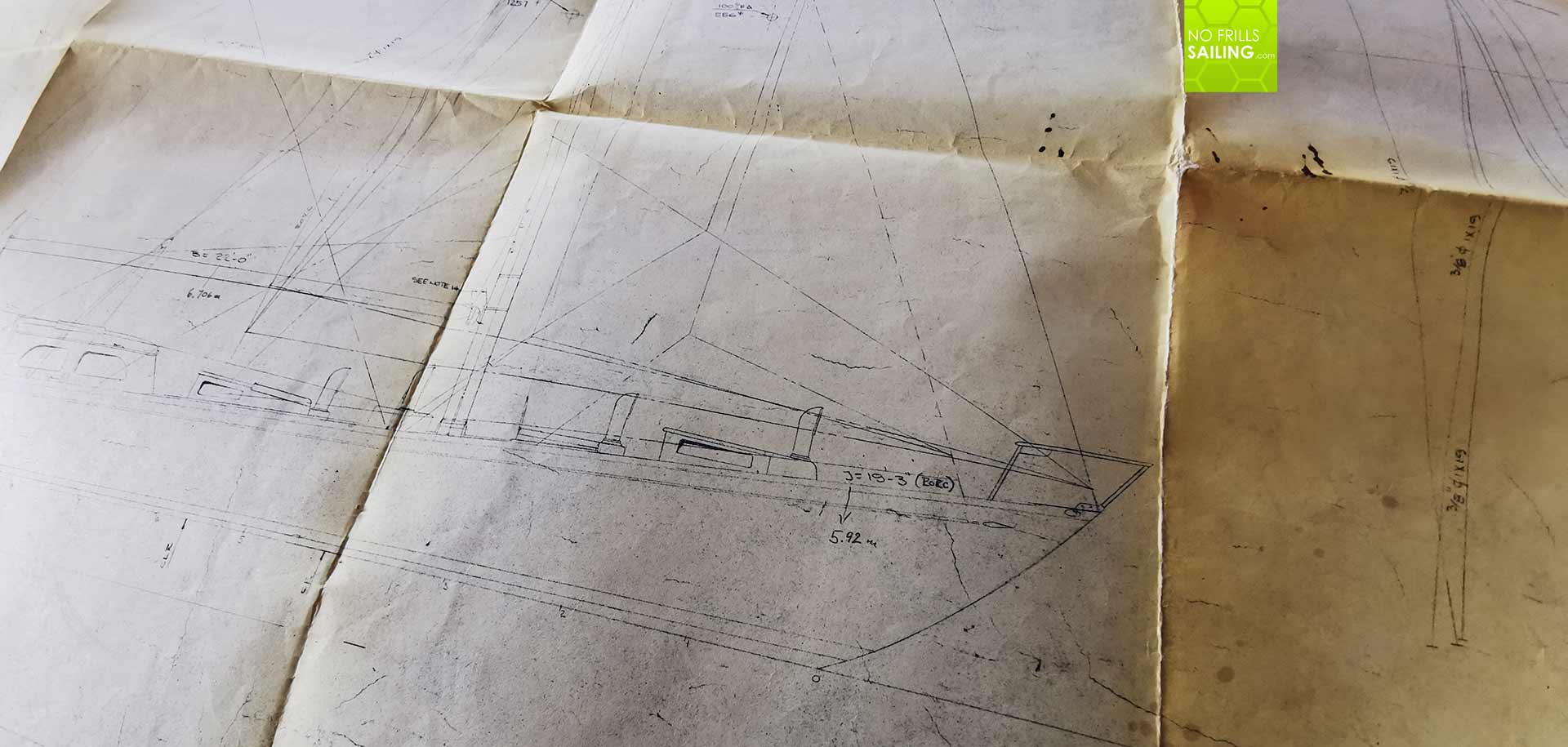
But it is also new technologies and materials Willi Brune is able to incorporate into his business. He shows a mockup of the furniture he is going to make for the Berckemeyer: A simple, plain white bulkhead, a door on two hinges. He hands it over to me, tells me to feel the weight. Light, very light. Right so, he says: For this boat they make their own basic material: A sandwich-foam core of extra light weight fermacell, divinycell or Balsa with self-carved veneer from massive timbers are glued and pressed. And extremely lightweight material from which all of the boat´s furniture will be made. Willi says proud, that the use of his proprietary base-material saves one ton in the boat. Impressive!
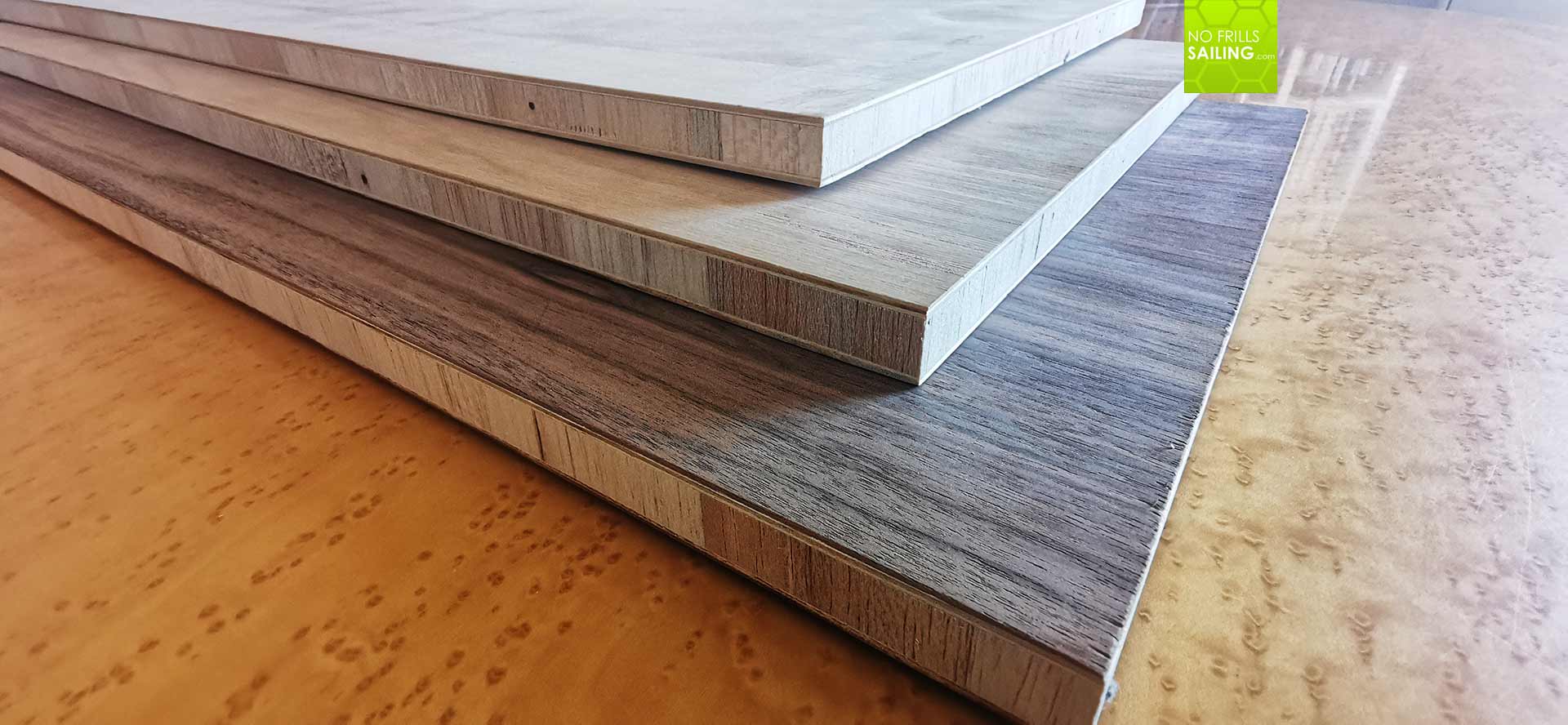
To be mostly independent from suppliers makes his work easy – and hard in both ways. He can offer highly individualized solutions and techniques, a guarantee for an absolutely stand-alone outcome. But this definitely has its price. I can see and begin to understand, why there are no Beneteaus, Hanse or Dehler boats are here.
Know how: More than refitting boats
We enter one of the big classy sailboats as Willi wants me to see the specialty of his boat-joiners: The floorboards. He doesn´t want me to picture all of the details, but he discloses that in the yachts his yard refurbishes, almost all boat-floors are made in the same way. A massive rack frames the outline of the particular floor, giving strength and structural integrity to the floor. The very floor is then produced via 1:1 gauge model as a type of inlay in the desired material.
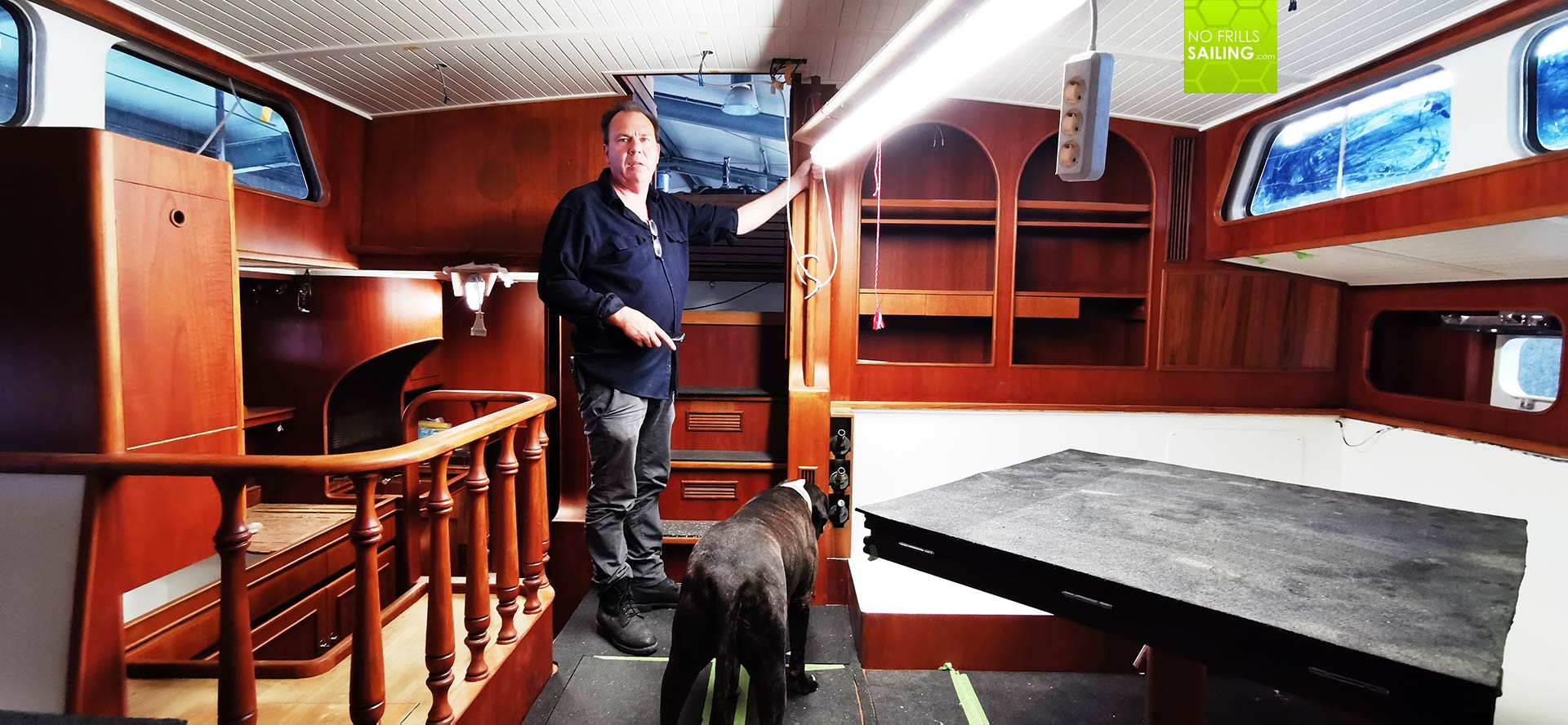
Walking the boat, I can witness the various steps and stages of expansion of such a project. I understand that each floorboard is an artwork of its own. Each one different from the next, in measurements, in design. There is no standardized size nor any possibility to adjust the production process to fit an industrialized standard. I also see the difference between a production cruise made on an assembly line and a ship, built or refitted in a yard like this.
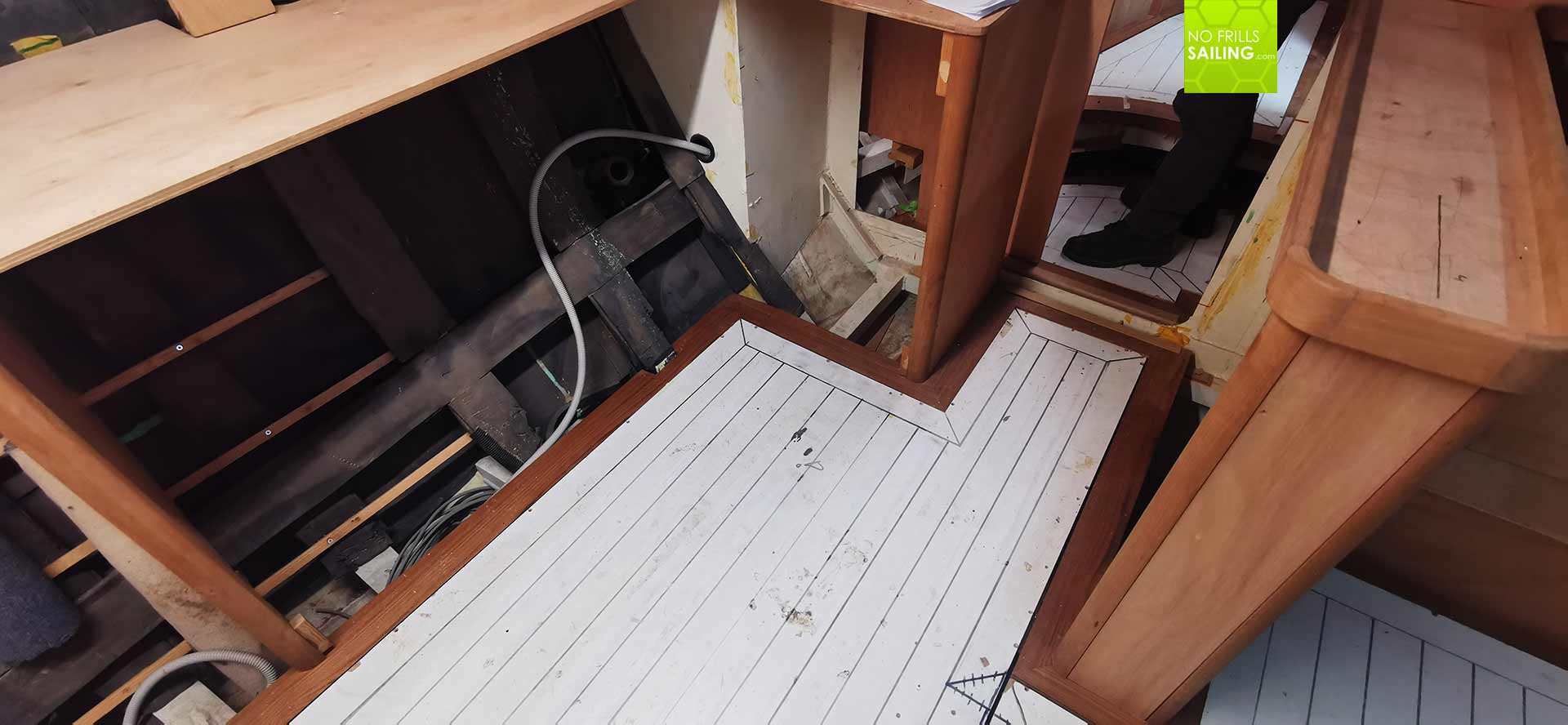
I touch the joinery, the rounded edges, the shapes of the closets, doors … and I see nothing else than absolute perfection: There is no clearance whatsoever. No difference in height. Even the grain of the timber is continuous throughout the complete length of a whole saloon. Veneers and massive wooden parts carefully selected to fit each other, to flatter the eyes of the owners and guests. Choosing the wood alone must have taken hours. Incredible!
A hundred Years of Shipbuilding
Willi takes me outside. He says, on this property alone some 100 years of yacht building, naval architecture and generations of boats are stored. I stand in awe in front of a Colin Archer double-ender, built in 1939. Wooden hull, of course – something very different than the GRP-copies one can see here and then sailing. This is a real Archer and as I come near and touch the planks I can literally smell history.
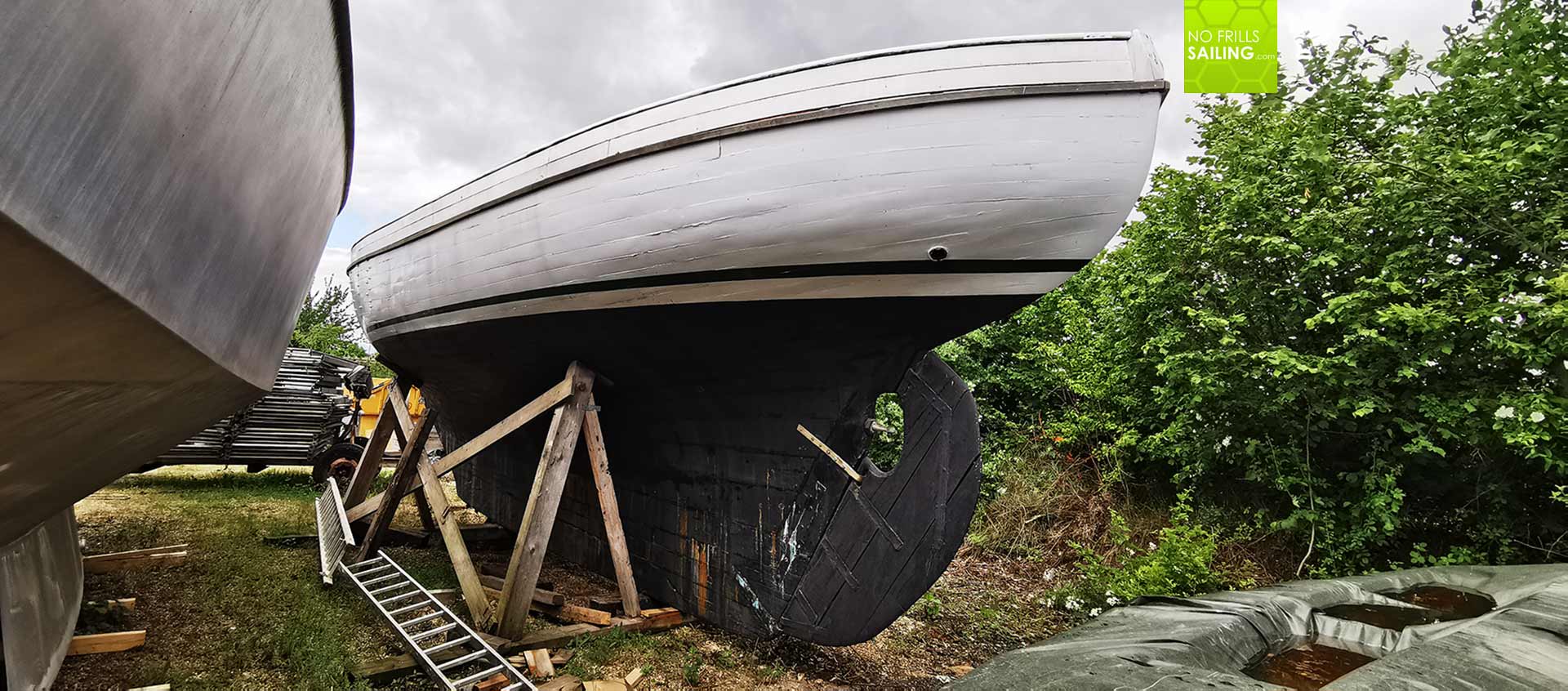
Willi tells me that they have almost finished her interiors, fitted it to the original standard of the early Thirtees. A Diesel-engine of the Fifties got completely restored and works as if it was new. Extensive repairwork on the hull took place: Almost all of the bow had to be cut off and carefully replaced. Nothing of which is visible anymore. She is stored outside, awaiting her finish. Willi is in his element: Knowing right out of his head every detail of the boat.
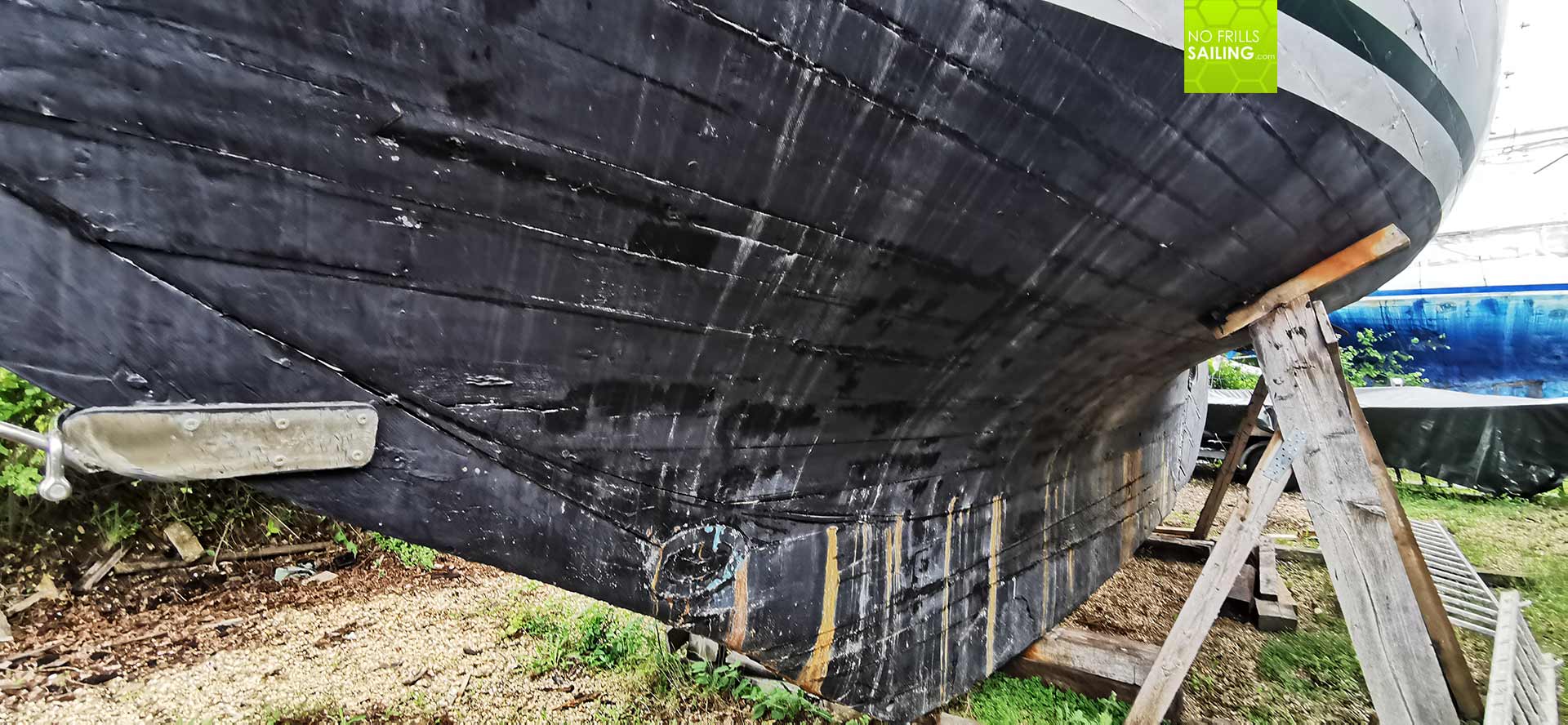
We go around and he points to the backwall of the big yard-hall. Rigging, masts and booms are stored in a huge rack. He shows me the mast: An utterly impressive all-wooden mast of glued laminated wooden parts. Glossy-painted thickly, brazen fittings, some leather on the mast top. So beautiful that one must cry. He is proud – but not cocky. Me being so impressed seems to irritate him, so he pulls me toward the next boat.
A taste for Beauty
It´s a Sparkman & Stephens sloop, wooden hull as well. Lines so wastefully beautiful, a boat like nobody would dare to design today. Wide overhangs with no real “value” to create interior volume, just for the looks, just for the taste. Like the Colin Archer next to her, the Sparkman looks for a new owner as well who can fully appreciate her beauty.
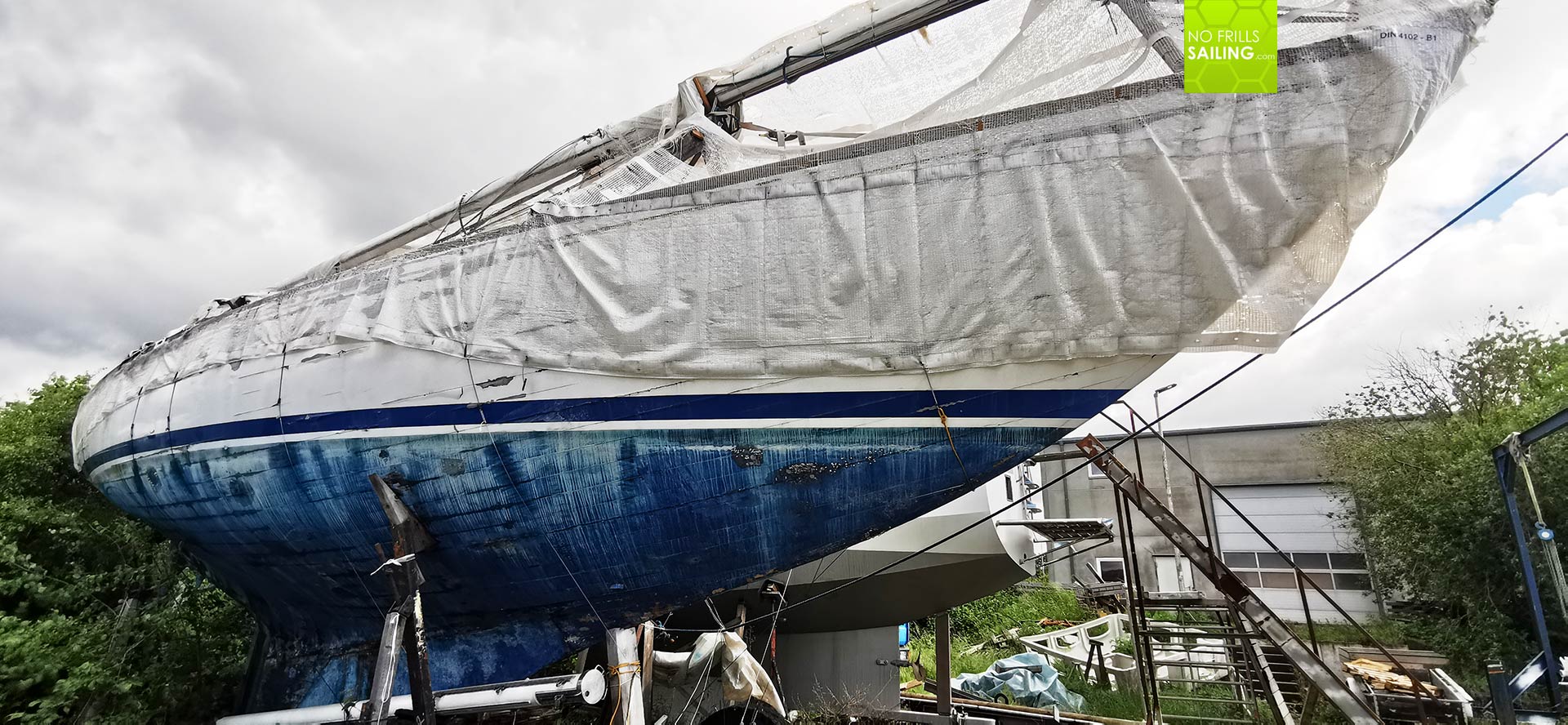
In this, I discover, Willi sometimes seems to buy a boat just for himself, just for the sake of it. Not every ship in his yard is a job for a client. He asks me if I´d see a market for a boat like this, which I definitely answer to in the affirmative: There are always people looking for the special, for the one boat nobody else has. Or a yacht that comes with a story, with a history. Both the Colin Archer and most likely this beauty fit this category perfectly.
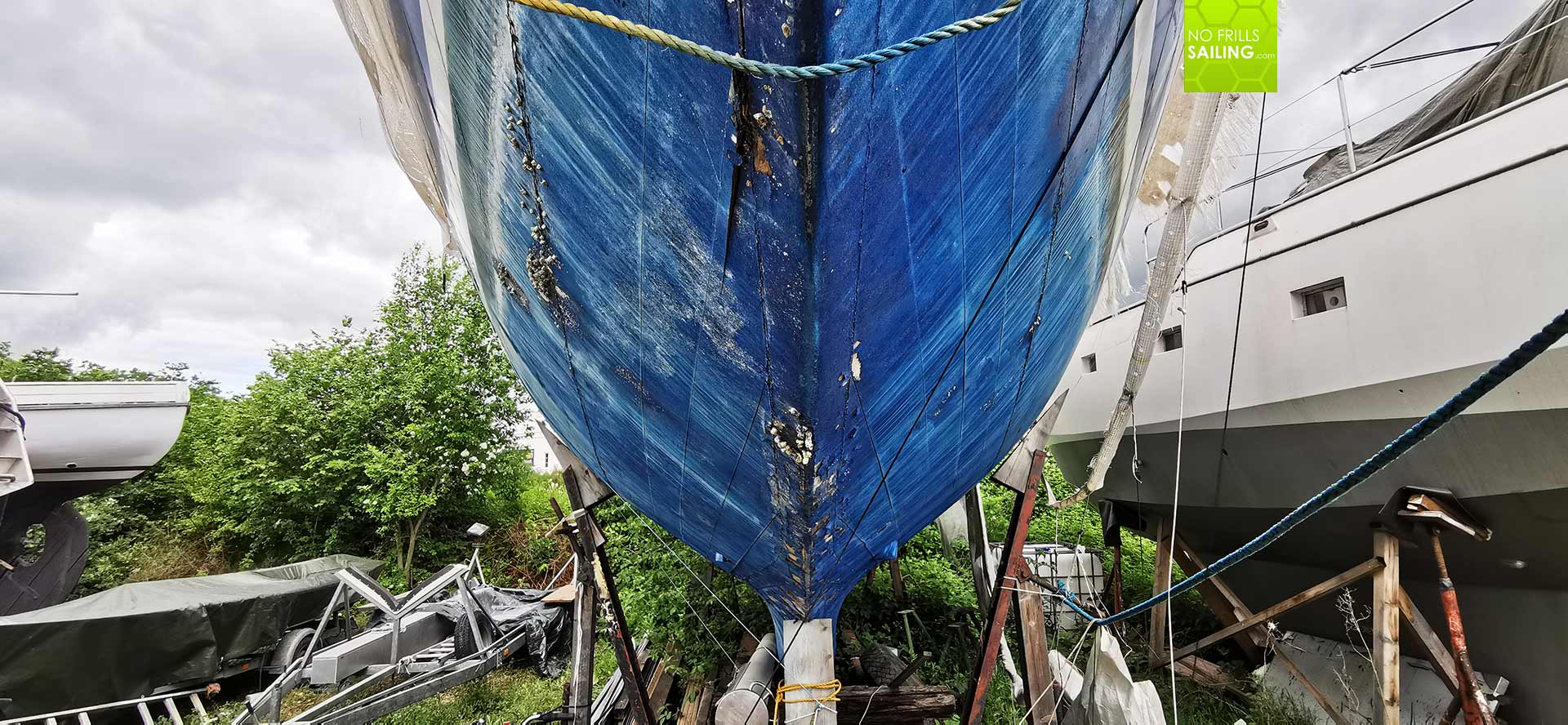
For his apprentices and workers these boats are more than perfect: On the one hand they can literally see and take apart how it had been done 100 years ago. Old craftsmanship, techniques and solutions can be seen, secrets unlocked. By skillfully re-furbishing or rebuilding these parts, his crew learns it the real way. These lucky young people, working on yachts, the real deal – not a faceless plastic bowl, like he puts it.
Special boats for special people
We continue our tour and come to a halt in front of another aluminum hull: A Reinke. This is truly an all-German specialty. Reinke Yachts are simple, sturdy, slow, high-sea-capable boats of a naval architect of the same denominator. A Reinke is bought as a set of plans, a simple hard-chined boat that – in theory – every reasonably skilled metalworker could cut and weld together. Most of the Reinkes are DIY-yachts, very, very special boats owned by very special people.
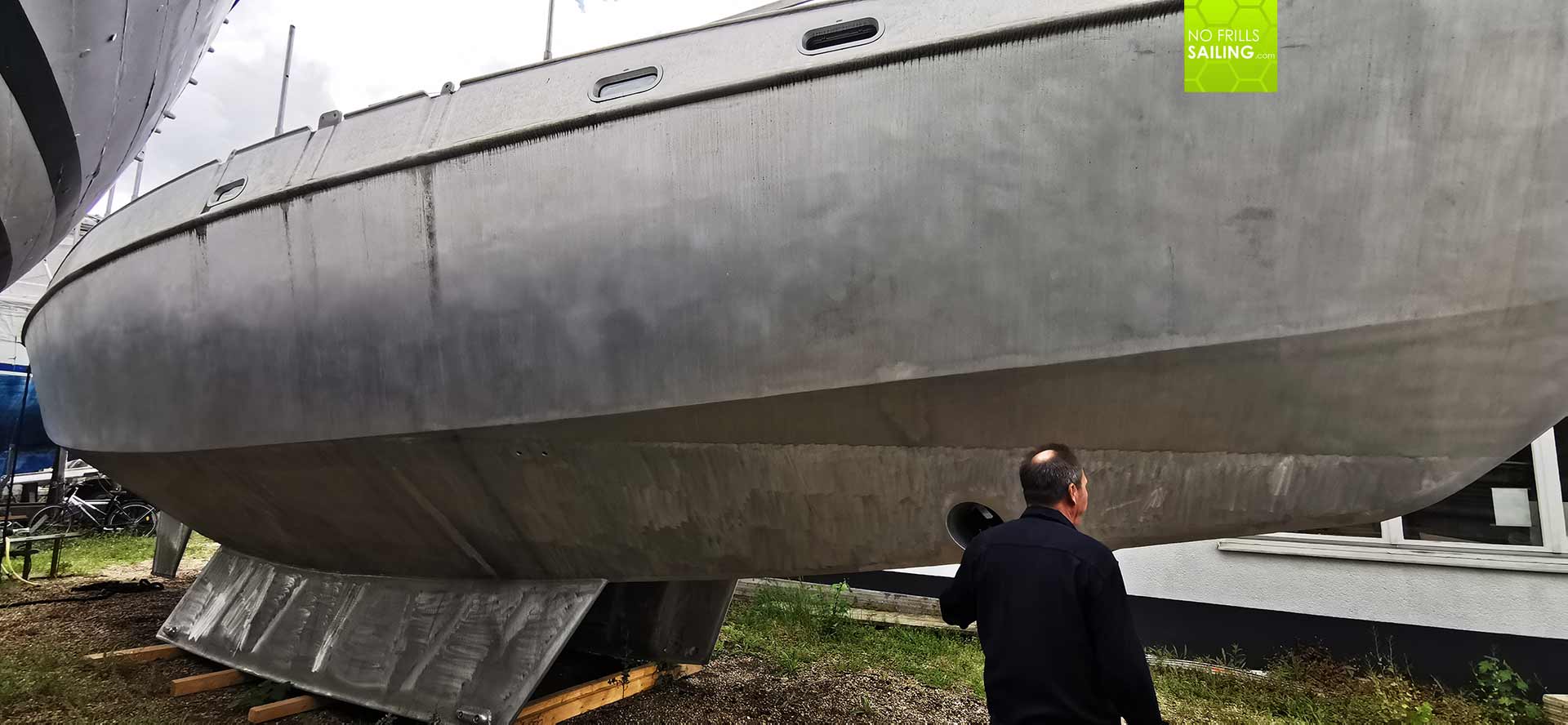
The Reinke in Mr. Brune´s backyard is finished from the outside and awaits an internal fitting. With her twin keel she can fall dry, her extra large displacement-hull is most certainly not a high speed boat but a yacht that might go anywhere. I am sure Willi will find a customer for this yacht too who is willing to take the hull and fill it with an interior of his dreams. The next boat cuouldn´t be of higher contrast, as we proceed to the adjoining workshop, another big hall.
80 feet Jongert flagship in the making
I stand in awe underneath the massive hull of a Jongert. This ship had sailed the Pacific Ocean twice, Willi tells me. She ended up years ago in Australia after their then owners had to abandon a circumnavigation. The owner had her transported back to Rotterdam by means of a freighter loaded with onions. After sailinger her upriver to Cologne, Willi took her under his wings to have her refitted thoroughly: This time an owner is paying real money.
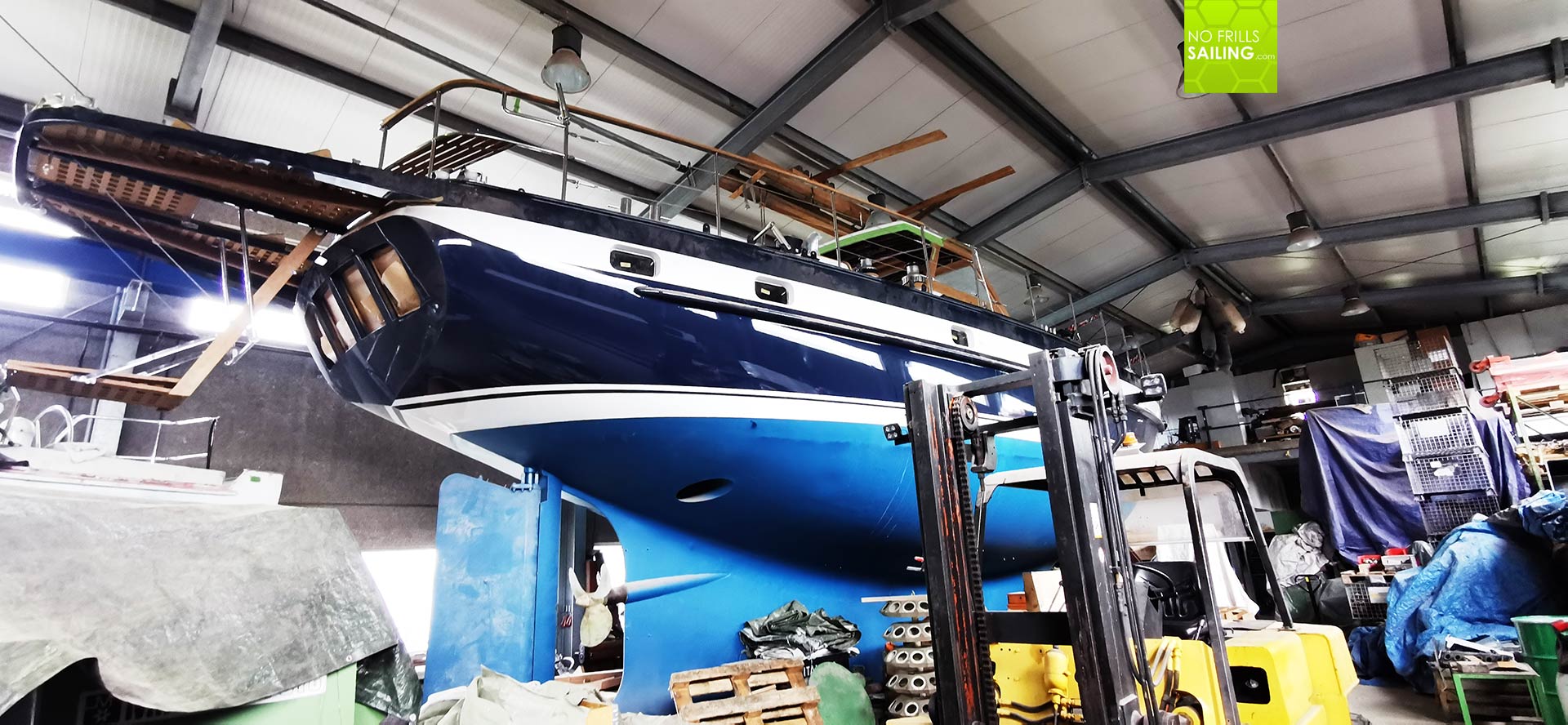
And he will get quite a bang for his budget: We start in the engine room, where Willi´s team not only refurbished the impressive Mercedes Diesel engine, but also refitted all piping and tanks. A completely new modern bilge-pump-system had been installed alongside no less than three generators. Brand new insulation and fire extinguishers, gauges and wiring. Such a nice work!
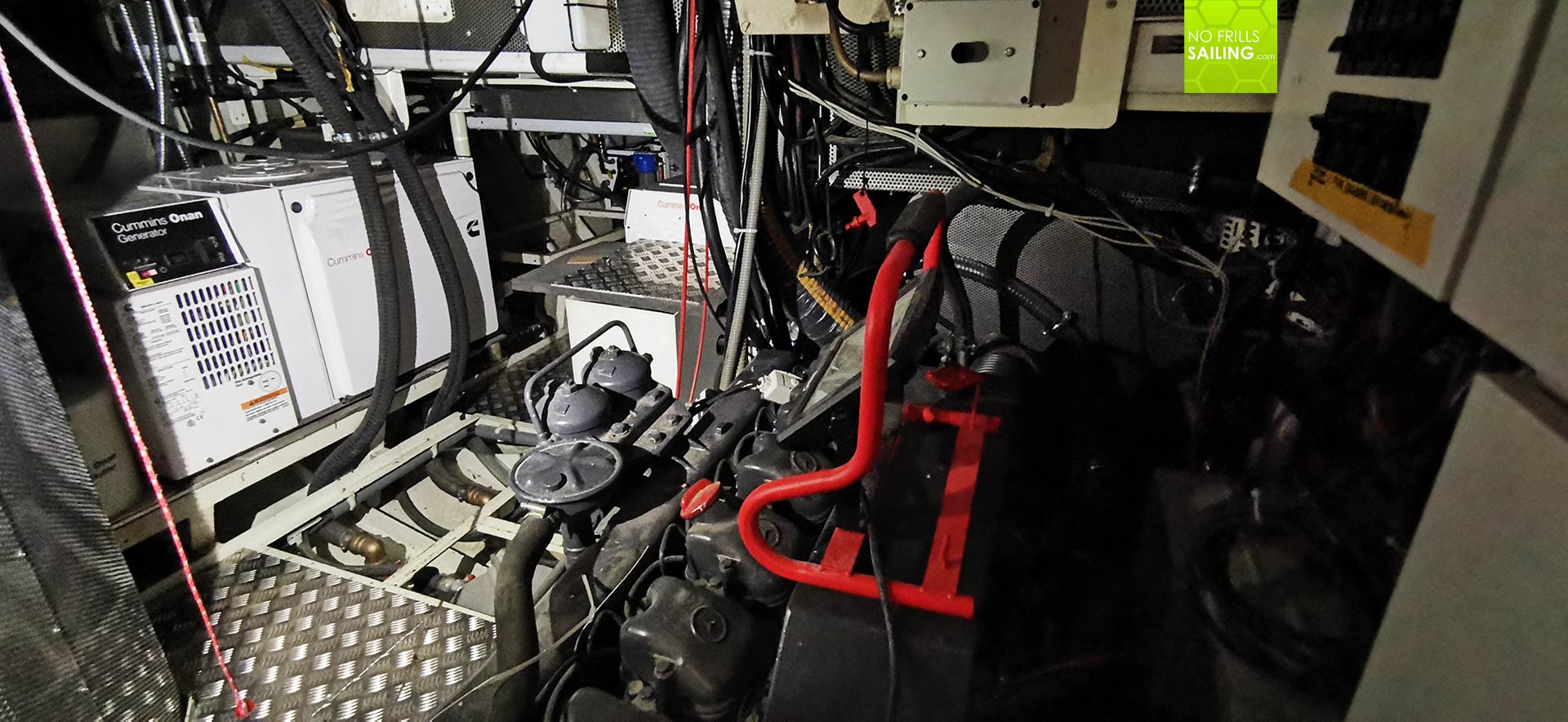
Willi takes pride in his work, more so, I think, because this is not the original specialty of his yard. The engine was taken apart in all pieces. Refurbished, cleaned and partially re-built everything went back together: And works perfectly. It is mostly the work of his son, he tells me, which makes him extra-proud I guess. His son is more into mechanics and metal, which is a great asset to the product range of his company.
A joiner´s pride: Teak deck. Massive!
But as a joiner, of course, Willi is absolute killer when it comes to wooden stuff. Best visible by looking at the fine Teak deck of the Jongert. I spot a hole in the deck, apparently for a winch or ventilation device. I kneel down to see it in all its glory – look at the thickness of the Teak! That is more than a 10 mm deck, I ask him. Willi smiles: 2 Centimeters! Where today can you get a real Teak deck in this thickness?
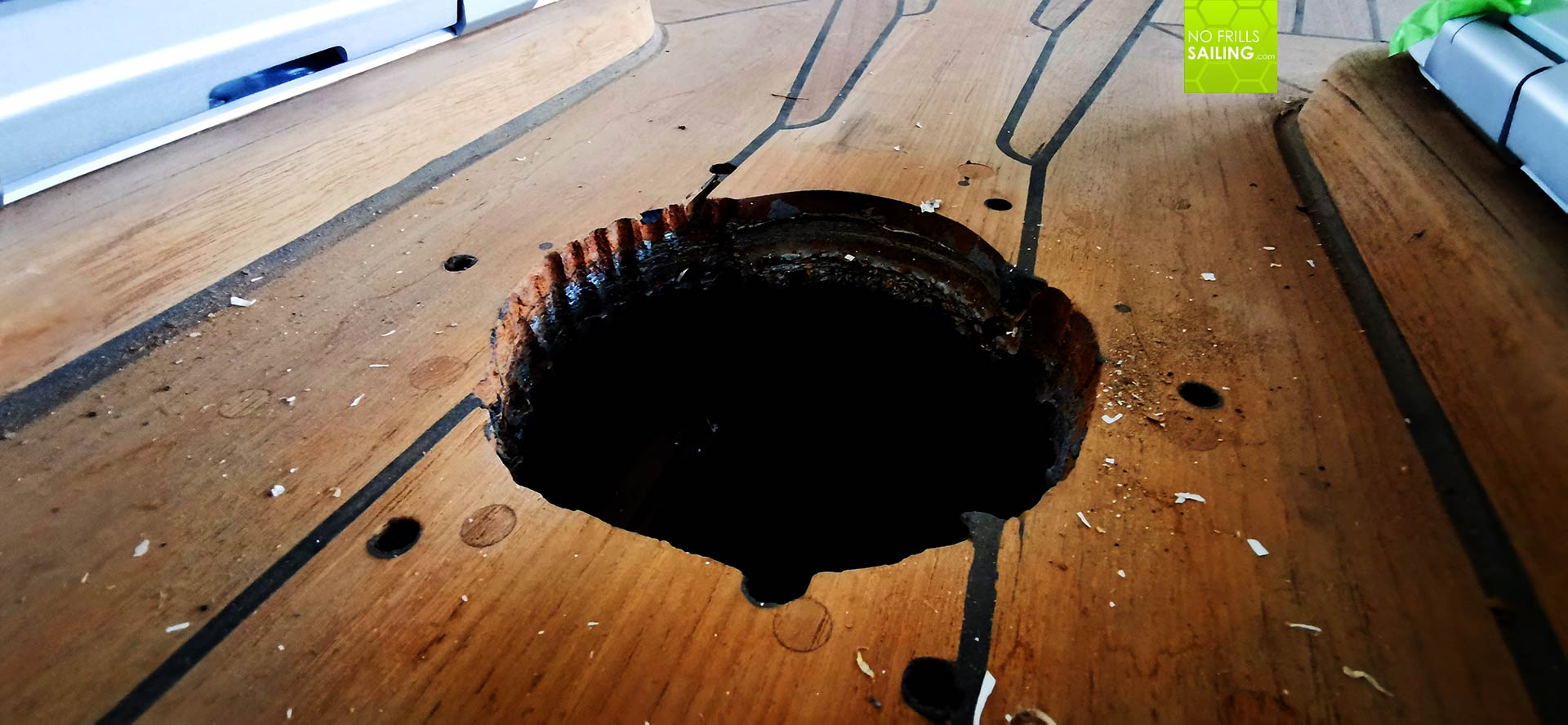
He bought full sized logs of massive Teak, stored dry and safe in a location. Enough for a lot of decking work to come, Willi assures me, as we talk about the oncoming end of Teak-utilization in the boating industry due to restrictions of commerce with Birma, where most of the boat Teak is originated. I appreciate the fine work done here, each batten screwed to the deck, the caulking done by skilled craftsmen. This deck, I am sure, will last more than a human´s life.
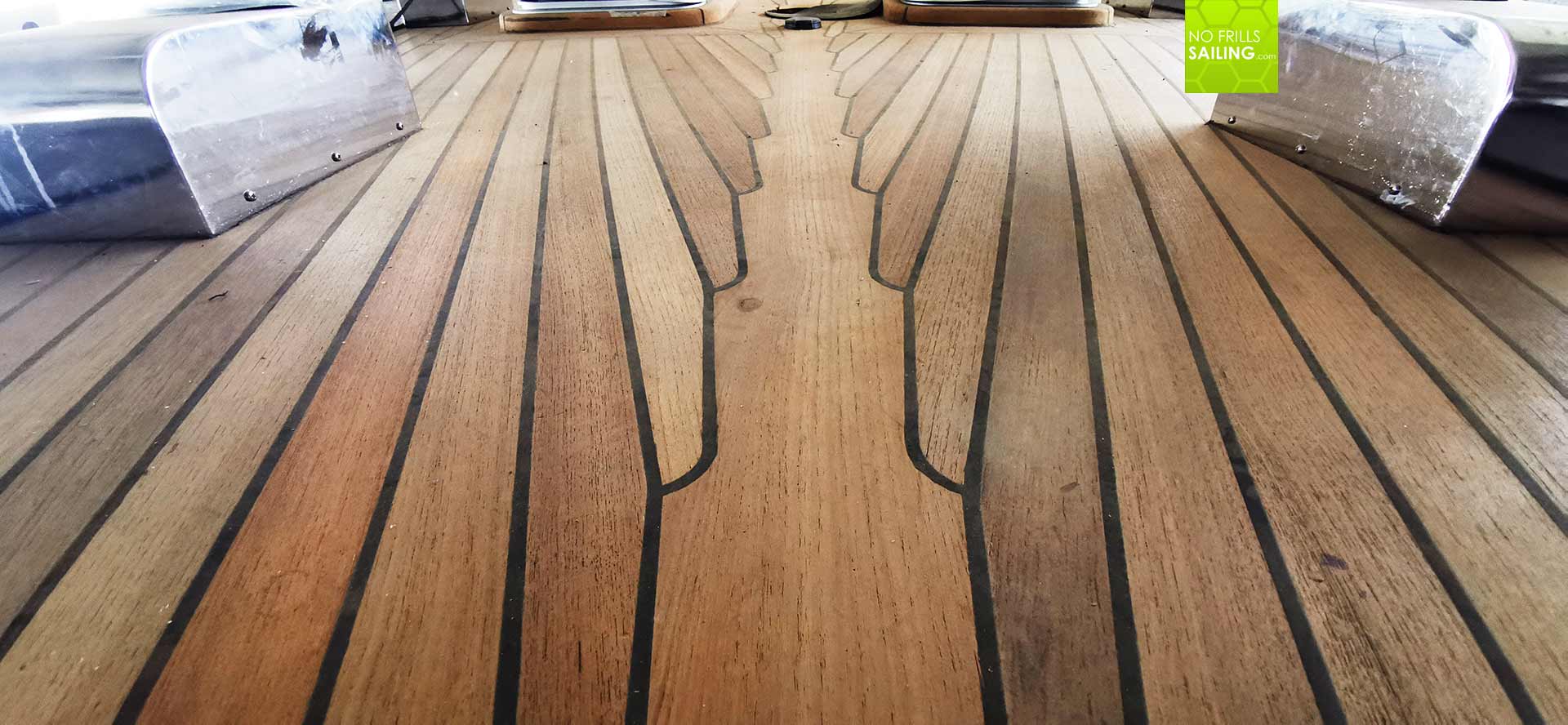
How skillful, how beautiful and how rewarding it must be to realize being the maker of such a detail like this deck? To be the one through which hands a simple batten has been turned into a nicely curved, yet perfectly adjusted part of this deck? Fitting its neighbouring batten neatly, keeping a perfect distance with all other battens, even integrated color-wise into an overall consistent picture? This is shipbuilding, I think to myself. So different from all I have seen before.
What an amazing location!
And so we conclude our walkaround through Willi Brune´s amazing enterprise. A fine selection of boats, a representative showcase of all handcrafts you might think of when talking boatbuilding, all materials you can imagine. From engine to hull, from furniture to rigging. Dedicated, friendly faces everywhere I look and a well-kept sympathetic chaos of stored materials, half-finished parts and projects. Character. Anywhere I lead my eyes to look at.
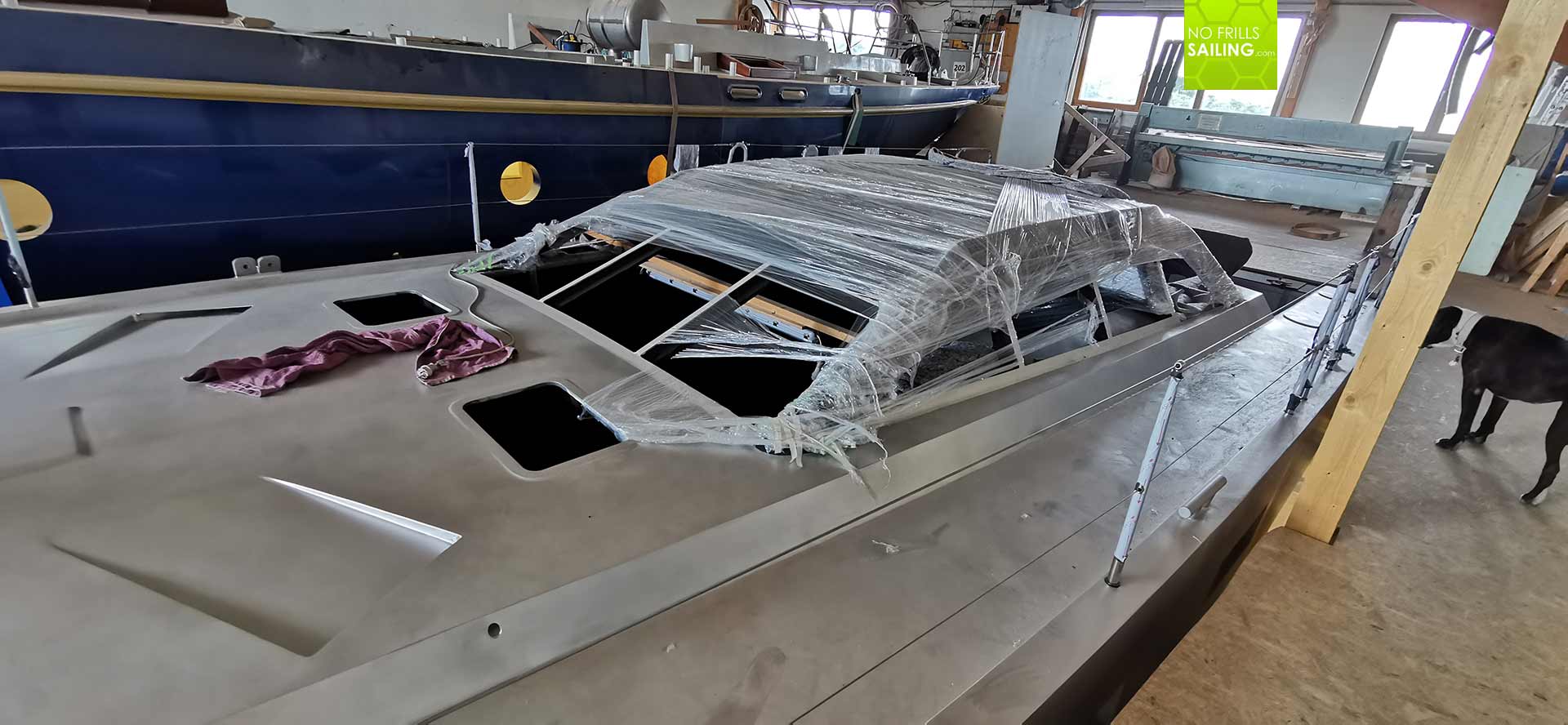
Willi is a grounded, down to Earth businessman who knows the market, who can even spit out the data of current modern day production cruisers. In the midst of this chaotic appearing collections of refit-jobs, of which one ship alone would drive me nuts, he even finds time to go sailing: Willi tells me that he has crossed the Atlantic Ocean three times. Does his year have 14 months?
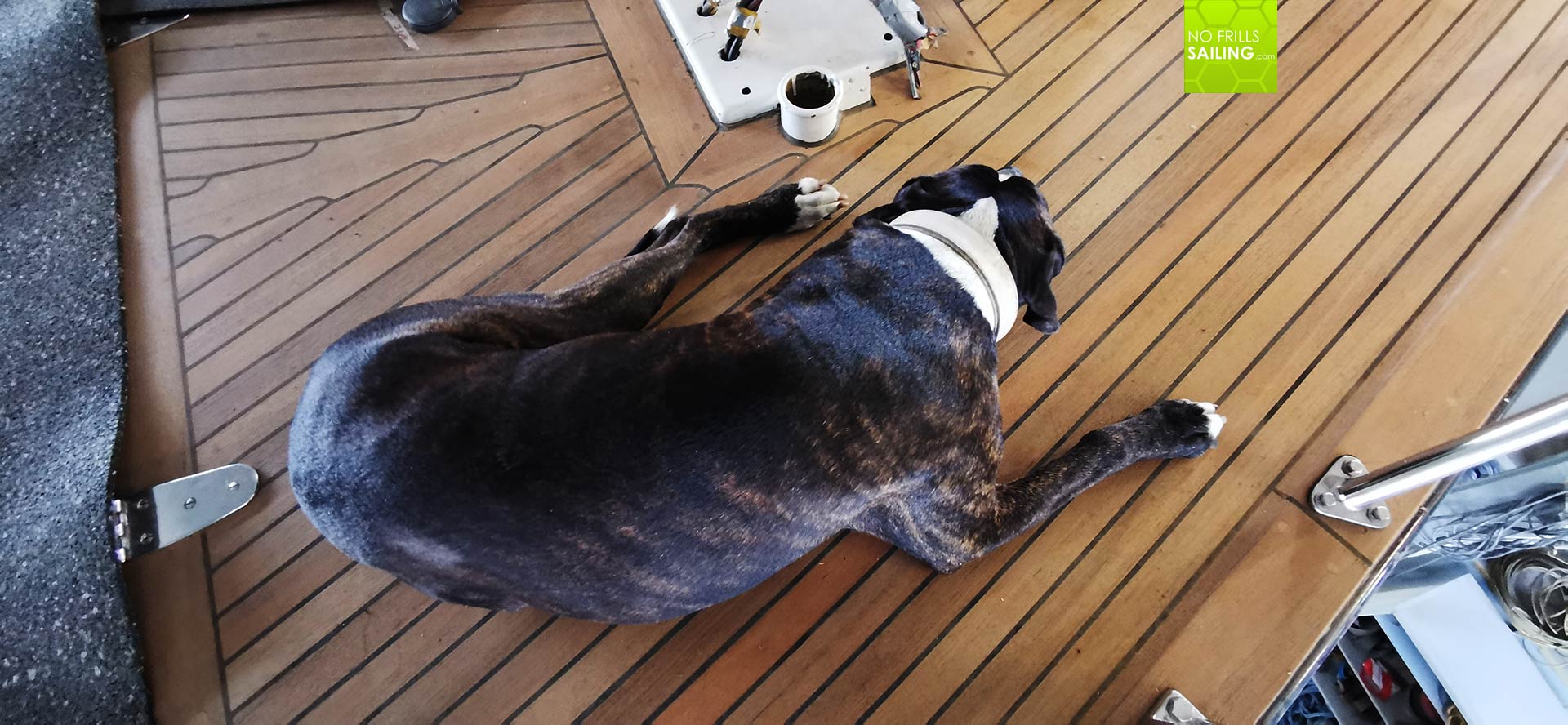
I end my visit where it started: Right next to the boat I originally came here to see. The Berckemeyer, being the most modern and youngest of his specimen, awaiting a quick finish, as he promises. I thank Willi for this exclusive tour through this absolutely extraordinary place. As we shake hands, I promise to come back – not just to see how the Berckemeyer BM 50 turned out to look like when Willi´s team finished its work, but also maybe to climb inside the Colin Archer and the Sparkman … I sense and feel that here near Cologne are many, many more exciting stories yet to uncover.
You might as well love to read about these yards I´ve visited:
A day at Luffe Yachts in Denmark
Visiting Amel at La Rochelle
Where the Solaris are made: Aquilea!
